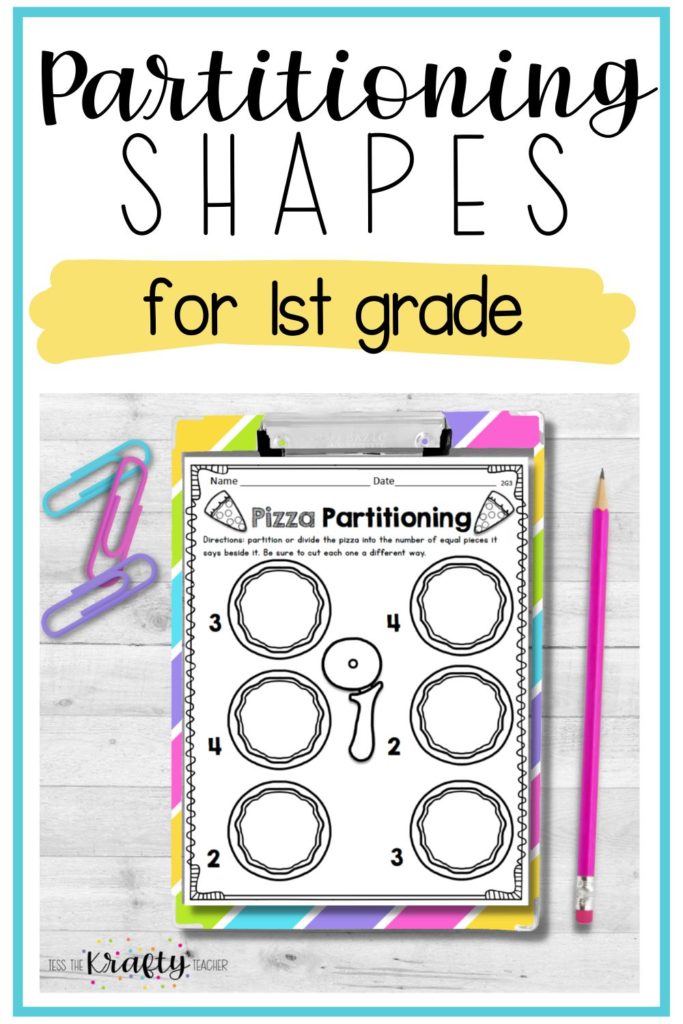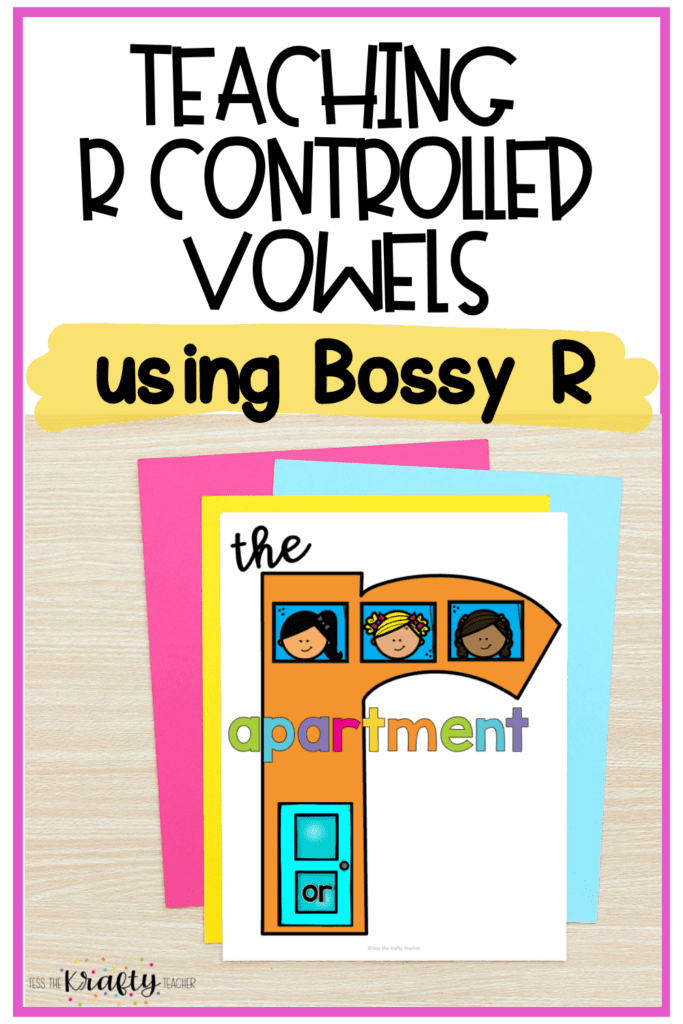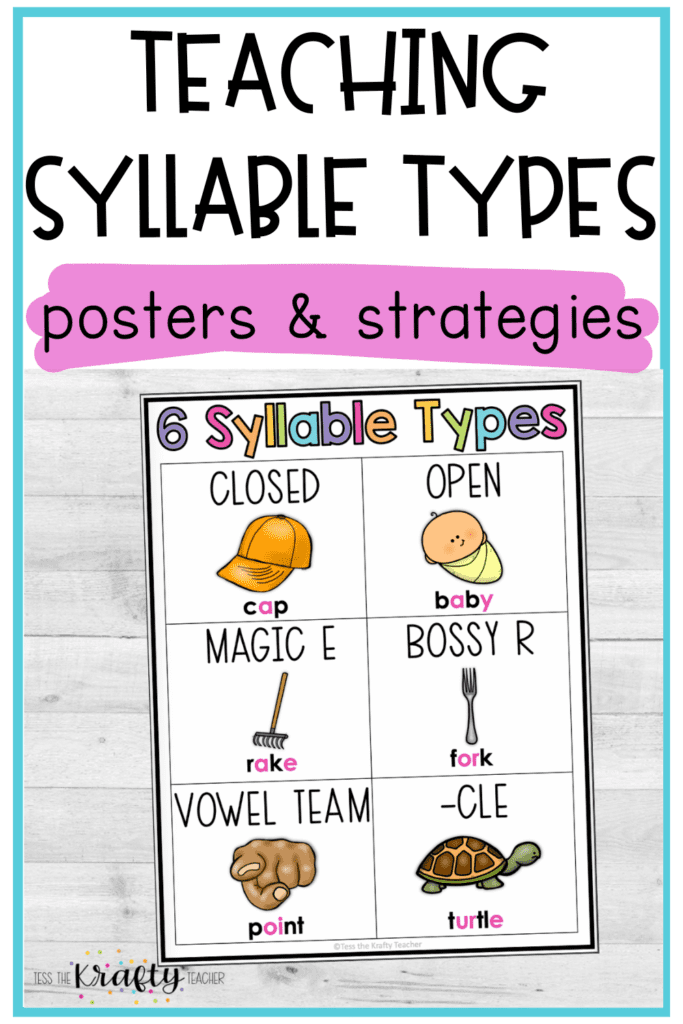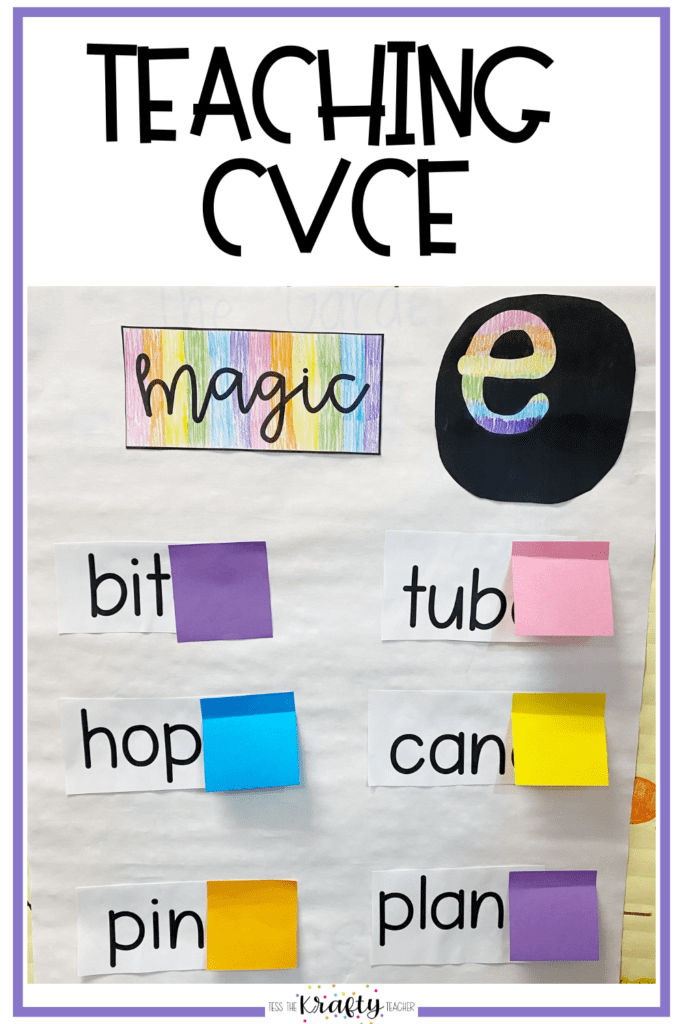Common core standards (and many state standards) expect students to begin partitioning shapes in first grade. At this age, students are being introduced to the basic concept and beginning to work with making halves, fourths, and thirds from circles and rectangles. Students are familiar with pizza so, I like to use it as a starting point for teaching first grades about partitioning fractions. In fact, I have an entire pack on Teachers Pay Teachers themed around pizza and fractions and partitioning shapes for first graders! Below, you’ll find more details on how you can use pizza to introduce partitions and fractions in your own classroom.
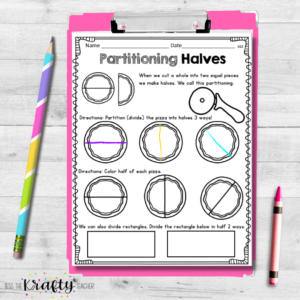
Introduce Partitioning Shapes Vocabulary
When introducing a new topic, it’s important to start with the vocabulary that students will encounter. When introducing vocabulary, students can benefit from hearing the words and seeing the words. This is why I like to display vocabulary for the unit we’re working on. When it comes to fractions, the key vocabulary words that I use are partition, half, fourth, and third. I display these words with a quick definition or visual representation as appropriate. For example, the definition I provide for partition is “Partition means to cut or divide.” I have included a done for you post in my Pizza Partitioning pack that includes a cute pizza and cutter graphic. This helps first grade students remember that partitioning is related to cutting. The other vocabulary words I teach include half, fourth, and third since we’ll be partitioning pizza into these quantities.
Counting Equal Pieces
When it comes to a concept, identification is the easiest step for a student to master. For our pizza partitioning lesson, students begin by counting how many pieces are on each pizza. This is a great place to start since it involves a skill they’re familiar with (counting) and allows them to apply the new concept. In order to identify partitions, students must first be able to count how many equal pieces are on a circle or rectangle. Begin by counting equal pieces as a whole group. Use pizzas cut in different ways to show that it’s the pieces and not the lines (or cuts) that matter when counting. Encourage students to use the vocabulary words but don’t expect them to master them yet. For now, focus on counting the pieces. When you feel your students are ready to apply the information, use the practice page from my Pizza Partitioning pack for individual practice and assessment.
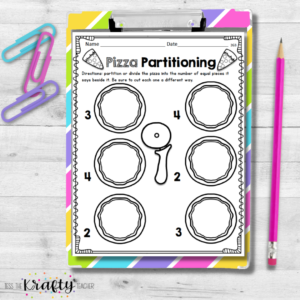
Sort Fractions
The next step is to identify whether a pizza is cut into halves, quarters, or thirds. You can do this as a whole group activity after introducing the vocabulary posters mentioned above. Then, allow students to interact with the material through a cut and paste activity. In this cut and paste activity, students will cut out several shapes that are partitioned into halves, quarters, or thirds. Then, they will sort them onto a chart based on how they’re cut. Once they have sorted the pieces, they will glue them down to complete the activity. This gives them practice in the basic skills of cutting and pasting while also identifying fractions. It also gives teachers a chance to assess how students are interacting with the materials.
Partition a Pizza into Fractions
After students have mastered identification, it’s time for further application of the skills. This time, students are going to work on cutting pizzas (both circles and rectangle) into partitions. For this activity, students use blank pizzas (or circles) to work with. They will use their pencil to divide each pizza into halves, fourths, or thirds. We start with the easiest of the fractions (halves) and save the hardest (thirds) for last. This allows them to build confidence while also building new skills. After doing whole class examples, I use a worksheet from my Pizza Partitioning pack for individual practice. On these worksheets, students begin by drawing the lines that will cut the pizza into partitions. Then, they progress to coloring one partition on each pizza. This is a great way to introduce the concept that a fraction is a part of a whole without going too in depth. This is a skill that they’ll focus on in a later grade.
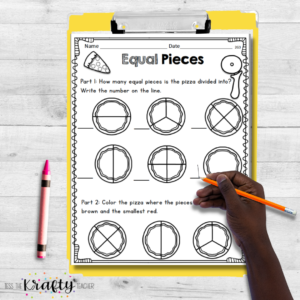
Partitioning Shapes with Pizza for First Grade
Students benefit when we can make connections between their classroom learning and real life. This is why I like to use pizza as a starting point for lessons on partitioning fractions in the early grades. In addition to having a real life connection, pizza allows students to remember the key vocabulary word of partitioning since pizza is cut into equal parts when being served. If you’d like to teach a pizza themed fractions lesson in your classroom but don’t want the extra work of creating materials, I recommend heading to my Teachers Pay Teachers store and picking up a copy of Pizza Partitioning. Then, use the tips above and make it fit with your classroom and the learning styles of your students. If you like this check out my Five Favorite Math Tools!
PIN FOR LATER
